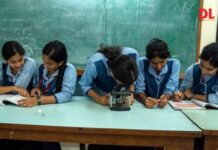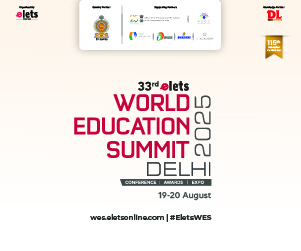China's Muslim Hui community is working against acute poverty and gender discrimination to focus on keeping all girls of school-going age in the classroom. The Hui ethnic minority is descended from Arabic and Persian merchants who came to China during the 7th century. Though the majority lives in the Ningxia Hui autonomous region, there are Hui people all across the country. Recently released figures show all children of school-going age in northwest Gansu province were attending primary school and the attendance rate at junior high schools had reached 95.5 percent. “This shows girl schooling, a problem that has harassed us for decades, has been settled to some extent,” Ma Yongming, deputy education chief in the Linxia region, was quoted as saying by Xinhua. Linxia, with a population of about two million, is dubbed “China's Mecca” as more than half of the residents are Muslims. Until the mid-1990s, only about 60 percent of its girls went to school. Inadequate education left 80 percent of women aged 15 and above illiterate. “While some parents refused to send girls to school because of poverty, many others believed it was a waste to spend the money on their daughters, who would be married off into other people's family and there would be no return on such investment,” said Ma. Boys, however, were often treated differently. “Parents rarely hesitated to send their sons to school. But some were reluctant to send daughters to school even if it was for free,” said Tang Yuwen, an official. To ensure equal access to schooling for all children, the Gansu provincial education department launched a Sino-British joint research project in 1999. It offered scholarship to girls and trained young women to become school teachers. In 2006, the Chinese government exempted fees for all primary and middle school students in underdeveloped regions. Officials in Linxia took the opportunity to ask parents to register all children at school. “School dropouts are reported to the education authority and the local government will hold their parents responsible,” said Ma Yongming. “We keep visiting these parents until they send their children back to school.”
Martial arts, meditation come to Indian theatre
At first sight, martial arts and meditation may seem activities that are miles apart from theatre performances but an on-stage experiment by the department of Indian theatre at Panjab University here is trying to build on the commonality they share. “People might find it surprising but if you know theatre, you understand the underlying similarities between the two,” department chairperson and noted theatre personality Neelam Mansingh Chowdhary told the sources. Chowdhary, who has directed nearly 30 plays and was conferred a Padma Shri for her contribution to Indian theatre, said, “Martial art teaches alertness, working with objects around, relationship with space, balancing, flexibility and risk taking ability. All these qualities are a must for a good theatre artist.” At a workshop in the department, which has been the learning ground for leading actors like Anupam Kher, Poonam Dhillon, Kirron Kher, and Satish Kaushik, students learned Manipuri martial art “Thang-ta” and Chinese meditation form “Tai Chi” from S. Biswajit Singh, who has been into this art for over three decades, to better their performance. During the 10-day workshop, students were taught sword and stick fighting, the art of defending themselves, the warrior dance, exercises for mental peace and stability and physical balancing. On the unique combination of “Thang-ta, Tai Chi and Theatre”, Biswajit Singh said, “The two traditional forms widen the possibilities physically and in the performance. It brings in more flexibility and energy and this, in turn, helps to polish the skills of an actor.” The experience has left participants yearning for more. Krishan Kumar, a final year student, said, “We never thought we will get to learn such things. The experience was amazing. We could not imagine that being an actor, we will be taught such good fighting skills.” Himanshu Dwivedi, a research scholar at the department, told the sources, “Synchronization of three things is most important for an artist when he performs – body, voice and mind. A good performance is a result of the perfect management of these three and this is what Biswajit Singh's lessons instilled in us.” The sessions were an “experience of a lifetime” and these skills will make them “even better performers”, he said. Indian theatre traces its origin back to about 5,000 years and now it has evolved into a full-fledged career option for students. Giving a platform to learn all aspects of the subject, the theatre department at PU offers a masters degree. It has 24 students, all of whom participated in the event. Students passing out from the department find jobs in acting, direction, production and other aspects of films, television and theatre.
Building national character – in a lab
Peeved at the rising cases of corruption in India, a Pune-based NGO has come up with the idea of a laboratory to help build character in the next generation. Sarhad, an organization working for children in the strife-torn areas of Kashmir and northeastern states, is initially coming up with a national character laboratory (NCL) in a school run by it for militancy-affected children in Pune. “Today nearly everyone defines and interprets character in his own way,” Sarhad's founder president Sanjay Nahar told the sources on telephone. “Since the names (in regard to teachings) of great national personalities, religious saints and leaders are being exploited shamelessly for individual, political and sectarian purposes, ordinary people and, more so, young schoolchildren are either getting confused about or developing undesirable images of these great souls,” Nahar said. At the NCL, the children would get an opportunity to explore, understand and gather the essence of religion and the life and works of great leaders through books, biographies, videos and movies. “The material would be compiled and kept in NCL and would be made available to school children daily and compulsorily, every day for half an hour. The idea behind NCL is to expose children to the facts and examples about what constitutes good character, as part of their school syllabus,” Nahar said. The laboratory is scheduled to open March 23, coinciding with the martyrdom of freedom fighters Bhagat Singh, Rajguru and Sukhdev. The organization plans to launch a study and research centre, estimated to cost Rs.1 crore, on October 2, the birth anniversary of Mahatma Gandhi. Nahar says he got the idea of setting up NCL from a similar initiative being run in Baba Aaya Singh Riarki College, a residential school in Gurdaspur, Punjab. “I was amazed to see a character building laboratory in a school. It was on a small scale, so I decided to replicate the model at national level,” he said. Swarn Singh Virk, who runs the college which started a “Charitrashala (character laboratory)” in 1976, said every school should have one. “We have 3,500 students and from cooking to cleaning, everything is done by them. Our students have topped in several competitive exams in the state. Here we help them build their character by analyzing things themselves,” said Virk. Nahar said corruption is prevalent in all government offices and recent cases of corruption in the allocation of 2G spectrum and preparations for the Commonwealth Games made him feel the need for a character laboratory akin to a science laboratory. The term laboratory in this context makes the place akin to the science laboratory, where researchers and scholars of all hues and ideologies would be invited. There would also be lectures, seminars and conferences on the subject conducted by eminent people in the field on an ongoing basis, he said. The NCL will have as its principal advisors M. Rahman, a former bureaucrat and vice chancellor of the Aligarh Muslim University (AMU), renowned scientist R.A. Mashelkar and social activist Anna Hazare.
Indians feel vindicated, but British professor denies plagiarism
Two Indian researchers who have been relentlessly pursuing a plagiarism charge against a British professor for over three years say they are at last vindicated, but the latter insists there was no violation. The Institute of Electrical and Electronics Engineers (IEEE) – the world's largest technical professional association – has now publicly admitted that a paper by Demetres Kouvatsos, a professor of information systems at the University of Bradford, and his student Salam Assi that appeared in an IEEE publication in 2007 was indeed copied from an unpublished work of scientists from New Delhi. But Moshe Kam, president of the IEEE, told the sources that his organization has now posted on its website a “notice of violation” by the British authors, saying their paper “contains significant portions of original text from the unpublished work” of the (Indian) authors “copied without attribution and without permission”. “Even though belated, the IEEE's decision is welcome to the extent that it puts on record that the original work was done by us,” Karmeshu Gupta, a professor of computer science at Jawaharlal Nehru University (JNU) in New Delhi and one of the authors of the original paper, told the sources. “It has, of course, brought the plagiarized work of Kouvatsos and Assi to the notice of the academic community, but this is no real relief to us because our struggle for the last three years with the IEEE has been to get their paper retracted to pave way for the publication of our original work, which still remains unpublished,” he said. The IEEE president did not explain why the offending paper was not withdrawn but only said in an e-mail that any person trying to access Kouvatsos' paper (or its abstract) in the IEEE database gets to see the notice of violation and is directed to the original paper by Indian researchers. In their complaint to the IEEE in September 2007, the Indian researchers alleged that Kouvatsos had plagiarized from their manuscript which he had occasion to review as a referee. “Our case raises a fundamental issue that publishing original work in science requires complete trust between authors and reviewers,” Gupta said. “If the reviewer runs away with the original idea of the authors, this may be fatal for the progress of science.” But Kouvatsos said on e-mail, “The alleged plagiarism was based on superficial and coincidental similarities and not 'significant' as it is currently stated in the IEEE note of violation.” He said he was confident that “with the strong support of the University of Bradford and independent expert colleagues in the field world wide”, the IEEE would remove the notice of violation “in the very near future”.
Kids of Mirchpur migrants finally admitted to school
Children of Dalit families, who had left Mirchpur village in this Haryana district out of fear of the Jat community and are camping at the district headquarters for the last many days, have been finally admitted in a school. These 32 children have taken admission at Raja Ram Memorial government school here after the intervention of Hisar administration officials. Their families are currently staying at a farm-house here. So far many government and private schools had refused to admit these children as they do not wanted to offend the Jat community. “We have admitted the Dalit children to school. The administration has also provided them free textbooks and study material. We would also provide free transportation to these children,” a local administration official said on Saturday. “We would make sure that no child suffers on the front of education,” he added. Mirchpur village in Hisar district, about 300 km from Chandigarh, hit the headlines last year when some people from the dominant Jat community set fire to a row of houses of Dalit families April 21, killing a 70-year-old man and his 18-year-old disabled daughter and destroying 18 houses. As many as 150 Dalit families were driven out of the village and their homes were torched. Many of them returned after intervention by the Supreme Court and assurances by the state government. However, there was a fresh wave of migrations from the village following the recent Jat agitation in January this year.
Tri-Valley won’t affect Indian enrolment in US – Experts
As another season of US education fairs comes around, education experts say the Tri-Valley University incident will not deter Indian students from coming to America but those seeking admission should make thorough enquiries first. “The Tri-Valley incident is an odd case that is being nipped in the bud by the active media and the action taken by the governments of India and the US. It will not have any impact on new admissions to US universities,” Prabhakar Lavakare, India country partner of the Institute of International Education (IIE) in the US, told the sources. “There are many fly-by-night institutions in the US and a careful study of their background and reference with The US-India Education Foundation (USIEF) would definitely help students avoid a similar situation,” he said. He was referring to the Tri-Valley University in California, where students, 90 percent of them from India, faced the prospect of deportation after the varsity was found to be a sham and was shut down. It is 'US Education Fair' time in India – through spring beginning in March and autumn in September – held mostly in Delhi, Mumbai, Pune, Bangalore, Chennai and Hyderabad. These fairs are organized by USIEF, IIE, Linden Tours and the Council for International Schools (CIS). There are also other players like IDP and American Expo which attract students through advertisements. “University studies are an investment in your future, weigh all the information before making a decision,” cautioned Susan Whipple of Marquette University, one of the oldest private universities of Wisconsin established in 1881. Whipple, who has been showcasing Marquette University in India since the 1990s, said students who are seriously inclined will not be dissuaded from applying to US universities as a result of the Tri-Valley incident. She said in order to comprehend the admission process, many Indian students and their families understand the value of attending fairs. Parke Muth, dean of international admissions in the University of Virginia, told the sources that many universities rely on 'word of mouth' and do not participate in any education fair for undergraduate programmes. “It is purely reputation and the detailed information about their programmes and campus life, available from university offices and their websites, which attract and enable students to choose a university in the US,” he said. The US has more than 3,300 accredited colleges and universities, which offer a wide range of graduate and undergraduate programmes. There are 4,352 degree-granting institutions in America but only the highest quality US universities are recognized by the popular university rankings. The 'Best 373 Colleges' named by The Princeton Review represent the top nine percent of universities in America. The rules and regulations governing the entrance of all international students into the US are complicated and should be properly looked into before applying for a student visa, said Lavakare. There are mainly two types of student visas: The F-1 (Student Visa) for full-time students enrolled in an academic programme and the J-1 (Exchange Visitor Visa) issued for students needing practical training which is not available in their home country to complete their academic programme. The central issue today is that many Indian students have already thought of a long-term career plan in the US as they apply for admissions. They often prolong their stay in the US so as to improve their professional careers and earn through lucrative jobs offered by industry which sponsors their potential employee for H-1B (Work Visa) – a requirement under the immigration rules, he said. Lavakare, in his study on the mobility of scholars between India and the US, states “the attraction for education in the US continues to grow but the nature of mobility and its diversity is changing. “Earlier, US universities attracted post-graduate students from India to get a PhD degree of a quality not easily acquired in India and the US universities were not looking for students as a source of revenue generation as the trend seems to be today, with focus now on undergraduate recruitment.” The number of students from India increased by two percent to a total of nearly 105,000. Indian students represent 15 percent of all international students in US higher education, the second largest international community of students after China, according to the Open Doors report 2010. Muth and Whipple said the number of undergraduate applications from students from India has shown an increase for Fall 2011. Engineering, biomedical, civil, electrical, computer, mechanical, sciences, business studies remain the popular programmes.
Homeland Security ponders fate of Tri-Valley students
The fate of hundreds of Indian students of a sham US university not implicated in the investigation of visa fraud by the closed school is under “active discussion” by US authorities. “The focus right now is on issues regarding what happens for students who are not implicated in the ongoing investigation,” State Department spokesman P.J. Crowley told reporters on Friday. “Those are matters under active discussion within the Department of Homeland Security,” he said when asked about the fate of hundreds of Indian students affected by the closure of sham Tri-Valley University (TVU) in California. Nearly 1,500 Indian students of TVU face the prospect of deportation unless they can secure admission to another school to maintain their visa status. Earlier this week US authorities agreed to work closely with the Indian embassy here for early resolution of the problems faced by the Indian students. The agreement was reached at a meeting between Indian Ambassador Meera Shankar and the affected Indian students with representatives from the US Immigration and Customs Enforcement (ICE) and Student Exchange Visitor Programme (SEVP) present. There was a detailed and useful discussion and exchange of information on the manner in which the problems of students at TVU are being addressed, and some of the continuing concerns of the students, the embassy said. “It was agreed that the students and representatives from ICE and SEVP would remain in touch with the Embassy to continue to work together for early resolution of the issue,” it said. The Embassy said it had also been informed by US authorities that more than 50 per cent of the students were at various stages of processing for reinstatement. Other students were advised to contact ICE on their website, or contact their call centre at telephone 703-603-3400 to initiate the consideration of their cases
AMU starts Murshidabad campus
The Aligarh Muslim University (AMU) on Sunday started classes from its Murshidabad campus in West Bengal with the first set of students for two-year MBA and five-year law programmes. “From today (Sunday) classes for the two-year MBA programme and the five-year B.A. (LLB) programmes have started,” said P.K. Abdul Aziz, the AMU vice chancellor. “Right now the classes are going on in a rented two-storied building as the campus is not yet ready,” said Aziz. Union Finance Minister Pranab Mukherjee has allotted Rs.50 crore for the Murshidabad campus in the union budget for 2011-12. West Bengal Chief Minister Buddhadeb Bhattacharjee and Mukherjee last year laid the foundation stone of the campus. Mukherjee is the Lok Sabha MP from Jangipur constituency which is part of Murshidabad district.
Software Engineering: An International Journal (SEIJ) launched
The Department of Computer Engineering of Delhi Technological University (formerly Delhi College of Engineering) has launched an international journal in Software Engineering namely 'Software Engineering: An International Journal' (SEIJ). SEIJ is an open access, peer reviewed journal that provides a forum for software engineering research. The journal publishes all aspects of software engineering. Topics of interest include software quality, software metrics, software architecture and design, empirical software engineering, software testing, software requirement engineering, security issues, reliability models and methods for developing, verifying and implementing the systems, method engineering, software reengineering and component based software engineering. The journal encourages empirical studies in software engineering with traditional and innovative techniques, including machine learning techniques. Papers are invited for the first edition of the journal which is expected to be released in July 2011. One can contribute research papers, illustrative case studies, practical experience reports, survey papers and short papers. The last date for submitting articles is 1st April, 2011. For queries contact Dr. Ruchika Malhotra, Executive Editor, SEIJ at ruchikamalhotra2004@gmail.com. More details can be viewed on the website www.seij.dce.edu.
Meenakshi Gopinath, Kiran Karnik, Seyed Hasnain appointed as UGC members
The University Grants Commission has appointed three new members in the statutory organization. Amongst the new members are Seyed E. Hasnain, Vice Chancellor of the University of Hyderabad, Meenakshi Gopinath, Principal of Lady Sri Ram College and Kiran Karnik, former president of NASSCOM. The term of Prof. Achyutananda Samantha of Kalinga Institute of Industrial Technology at Bhubaneshwar has been renewed.
Dr. Hasnain was amongst the top candidate for the post of Vice Chancellor of the Jawaharlal Nehru University while Dr. Gopinath was one of the candidates short listed for Delhi University’s Vice Chancellor post. The UGC has twelve members including the chairperson and the vice chairperson. Prof. Ved Prakash has taken over chairperson of the Commission after the term of Sukhadeo Thorat ended in February 2011. Prof. Ved Prakash was the vice-chairperson of the UGC. Some other members of the Commission are Vibha Puri Das, Secretary, Department of Higher Education, Ministry of Human Resource Development; Additional Secretary, Department of Expenditure, Ministry of Finance; Shivaji Rao Shripatrao Kadam, Vice Chancellor of Bharati Vidyapeeth University, Pune; Prof K. Ramamurthy Naidu, former official of Andhra Pradesh; Prof. Xavier Alphonse, Director, Indian Centre for Research and Development of Community Education in Chennai; Dr. Vidya Yeravdekar, Principal Director, Symbiosis, Pune; and S.S. Mantha, acting chairperson All India Council of Technical Education (AICTE).



















